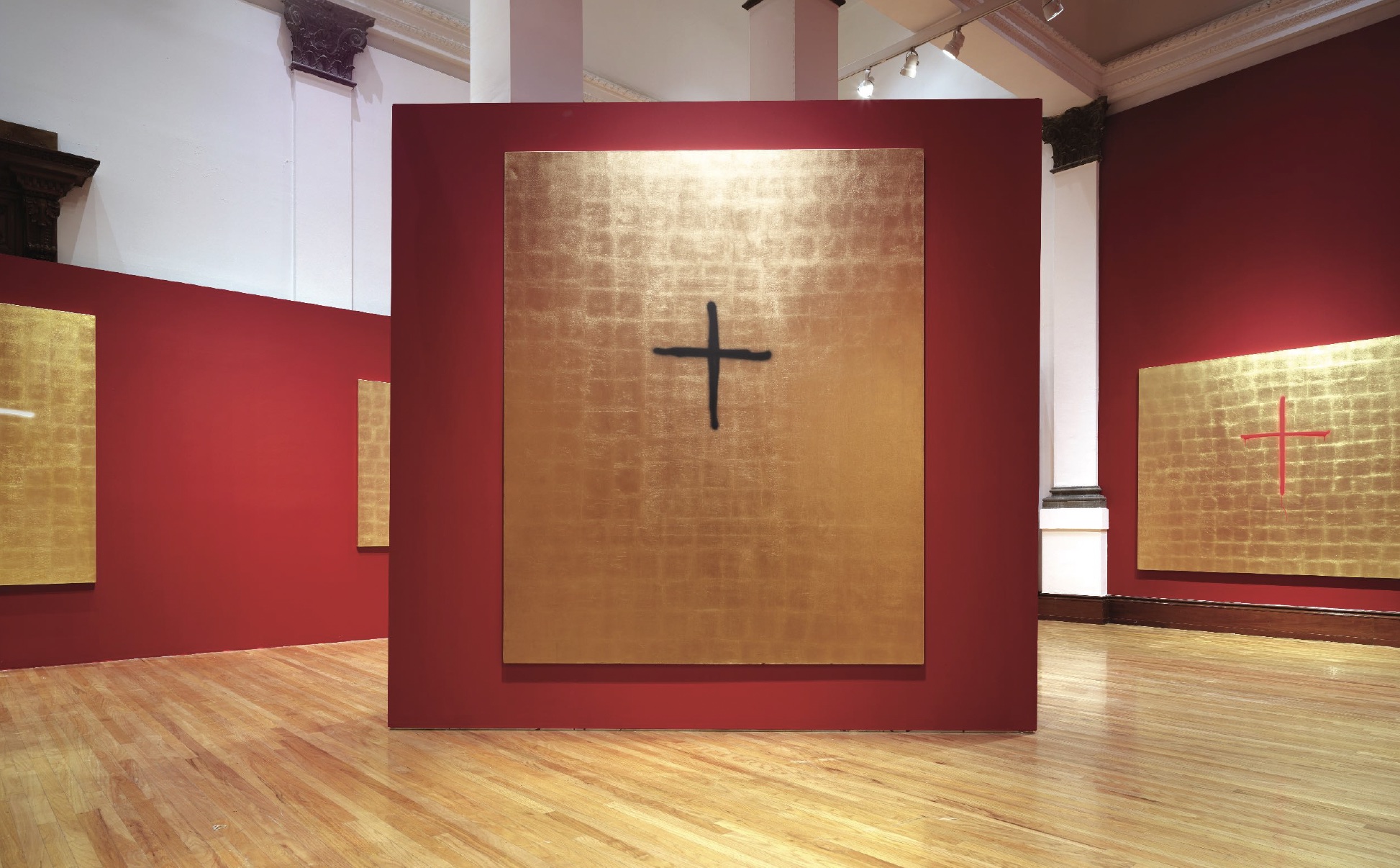
Stefan Brüggemann
Dos Líneas (Fe)
Exhibition
-> Feb 1 2024 – May 1 2024
Museo Nacional de Arte
National Art Museum (MUNAL) presents the exhibition Dos Líneas (Fe) by the artist Stefan Brüggemann, an exhibition that explores the edges of legacy, power, symbol, religion and history.
Dos Líneas (Fe) is the latest exhibition by Stefan Brüggemann (CDMX, 1975). A proposal for the Museo Nacional de Arte that speaks of heritage, power, symbols, religion and history, of Minimalism, Sacred Art, Muralism and Pre-Columbian Art. The work, created specifically for the exhibition, is inescapably influenced by the context of the museum itself, a recipient of great works of art that bear witness to Mexican history, from the viceroyalty to the present day. The study of the collection served as a catalyst for an introspective journey that led to the conception of the works now on display at MUNAL.
During this journey, Brüggemann was able to delve deeply into his personal heritage, a heritage that has extraordinary parallels with the Mexican cultural heritage. His father, a European, was a renowned archaeologist who, among many other projects, was responsible for the excavation of the archaeological remains of Tajín. His mother, a Mexican, worked on the excavations of the ancient Cathedral of Mexico, located just a few metres from the site of the museum. During this process of reflection, a particularly relevant memory came to the fore. As a child, when he first observed the phylacteries of religious paintings, he discovered that the painting could contain text. This revelation was to have a profound effect on his artistic production, as text has been the backbone of his entire oeuvre. Before concluding his self-analysis, he did not forget the muralists, to whom he owed the social, political and economic dimension of his works. Brüggemann captures all this amalgam of legacies and ideas, embedded in his memory even before he was born, in the paintings that make up this exhibition. These are large canvases covered with gold leaf, some with silver, on which he paints simple spray-painted crosses. The large fields of gold and silver, together with the sprayed crosses, result in a kind of symbolic minimalism where, as in all his work, the viewer is overwhelmed by the questions the works raise. Although on this occasion he uses the symbol instead of the usual text to achieve this, the result is still the same invitation to reflection, far from positionalism and indoctrination.
Gold leaf and silver, recurrent in his recent work, are materials that allow Brüggemann to paint by reflection. They adapt perfectly to the surface on which they are applied, revealing every texture of the material itself and reflecting every little gesture of the artist in applying them. But his choice goes beyond the purely formal. Both materials have an important symbolic component relating to power, wealth or greed, but they are also materials with a long tradition in art history, alluding to Sacred Art, Ornamental Art or Mexican works of art such as those preserved in the MUNAL. However, Brüggemann's use of them, extending them over the entire surface of his big canvases to form large monochrome fields, gives the paintings an almost industrial aesthetic, reminiscent of Minimalism. This clash of ideas and styles takes the viewer into the realm of amphibology and contradiction, where Brüggemann's work achieves the desired dimension.
The choice of spray paint for the crosses, the central element of the works, is by no means accidental. Once again, it is a recurring material in Brüggemann's oeuvre. On this occasion, his choice takes on a particularly transcendent meaning, as spray paint is both a symbol of protest and a symbol of contemporary expression. The cross is perhaps the most recognisable, powerful and influential symbol in our history. Needless to say, its obvious connotations are well known to all. But if there is one thing that all of Brüggemann's works have in common, it is that no element used, be it material, symbol or text, remains what it is at first glance or has only one interpretation, and this occasion is no exception. The crosses in his works are two simple sprayed lines that intersect, just as in Mexico two lineages, the indigenous and the Spanish, have intersected to form the country's cultural heritage.
With the title of the exhibition, which is shared by all the works in it: "Dos Líneas (Fe)” (Two Lines (Faith)), Brüggemann emphasises this idea and leads us to a profound reflection on Mexican cultural reality.
— Stefan Brüggemann